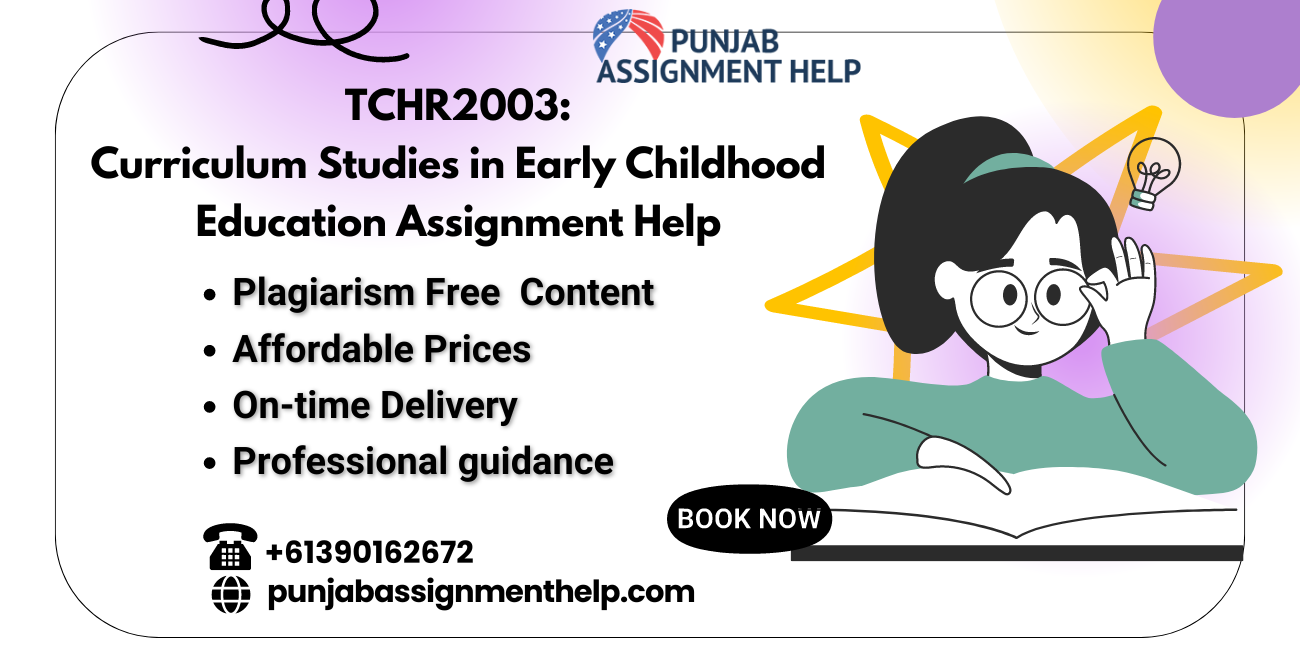
| Title | Assessment 2 |
| Type | Portfolio |
| Due Date | Friday, 4thOctober 11:59 pm AEST(Week 6) |
| Length | 1500 words |
| Weighting | 50% |
Academic Integrity
| Please write the first draft of your assessment yourself and ensure you write in your own words and provide appropriate references (APA 7). Then to further refine your assessment you are allowed to use AI tools such as Grammarly and Copilot to check your grammar, spelling and punctuation. |
| Submission | Word document submitted to Turnitin (for written assessments). |
| Unit Learning Outcomes | This assessment task maps to the following ULOs: ULO1: describe and justify curriculum in early childhood education and care services ULO2: understand and demonstrate conceptual knowledge related to key learning areas for children from birth to five years ULO3: argue, with reference to the literature, how curriculum key learning areas can be applied to support children’s learning ULO4: create and analyse learning environments of curriculum key learning areas for children’s development and learning explain the role of the early childhood educator
|
This unit develops conceptual knowledge of the holistic and integrated approach to curriculum in the early childhood setting for children aged from birth to five years. Students learn about the importance of play, the Early Years Learning Framework (EYLF) (2022), National Quality Standard (ACECQA, 2020) and use an integrated approach of the learning areas (Australian Curriculum Foundation Year; English, Humanities and Social Sciences, Health and Physical Education, Languages, Mathematics, Science, Technologies, and The Arts).
The purpose of this assignment is to develop deeper knowledge and understanding of how everyday objects, routines, and resources in the early childhood setting can be used to promote children’s learning and development across the learning areas (Australian Curriculum- Foundation year) with links to the EYLF Principles and Practices and Learning Outcomes and NQS QA. It is also important that early childhood educators have a deep understanding of the role of children’s play in these learning environments to best promote children’s conceptual knowledge in learning areas appropriate to birth to five years. Assessment 2 requires you to analyse 2 early childhood education photos and explain how the environment is used to support children’s learning and development. Relevant links to theory and key learning areas and the EYLF Principals and Practices will be used to justifythe pedagogical approaches used by the educator teacher to support children’s early learning and development.
There are four photos of different early learning environments in early childhood settings provided in the Assessment 2 folder.
Choose two of the photos and respond to the following for each (750 words for each photo):
Use APA 7 referencing throughout and double-lined spacing, Times Roman 12-point Font.
NQS QA= National Quality Standard Quality Areahttps://www.acecqa.gov.au/nqf/national-quality-standard
https://www.acecqa.gov.au/sites/default/files/2018-07/RevisedNQSHandoutA4.pdf
Australian Curriculum https://v9.australiancurriculum.edu.au/
EYLF = Early Years Learning Frameworkhttps://www.acecqa.gov.au/sites/default/files/2023-01/EYLF-2022-V2.0.pdf
Referencing Style Resource
About APA 7th - APA 7th Referencing Guide - Library guides at Southern Cross University (scu.edu.au)
Assessment 2 should be submitted using the Turnitin in the Assessments Tasks & Submission section on the Blackboard TCHR2003 site.
You must label your submission with your surname and initials and the Assessment Task’s name. You must label your submission with your surname and initials and the assessment task's name, e.g: JSmith student number_TCHR2003 Assessment 2.docx
At Southern Cross University academic integrity means behaving with the values of honesty, fairness, trustworthiness, courage, responsibility, and respect in relation to academic work.
The Southern Cross University Academic Integrity Framework aims to develop a holistic, systematic, and consistent approach to addressing academic integrity across the entire University. For more information see the SCU Academic Integrity Framework
NOTE: Academic Integrity breaches include poor referencing, not identifying direct quotations correctly, close paraphrasing, plagiarism, recycling, misrepresentation, collusion, cheating, contract cheating, fabricating information.
Please write the first draft of your assessment yourself and ensure you write in your own words and provide appropriate references (APA 7). Then to further refine your assessment you are allowed to use AI tools such as Grammarly and Copilot to check your grammar, spelling and punctuation.
Please refer to the Special Consideration section of Policy https://policies.scu.edu.au/document/view-current.php?id=140
Studentswishingtorequestspecialconsiderationtoextendtheduedateofanassessmenttaskmust submit a Request for Special Consideration form via their My Enrolment page as early as possible and prior to the original due date for that assessment task, along with any accompanying documents, such as medical certificates.
Please refer to the Late Submission & Penalties section of Policy https://policies.scu.edu.au/view.current.php?id=00255
Assessments that have been submitted by the due date will receive an SCU grade. Grades and feedback will be posted to the ‘Grades and Feedback’ section on the Blackboard unit site. Please allow 7 days for marks to be posted.
Please note that re-submissions are not permitted for this unit as per SCU policy.
… continued on next page…
The student’s performance, in addition to satisfying all of the basic learning requirements, demonstrates distinctive insight and ability in researching, analysing and applying relevant skills and concepts, and shows exceptional ability to synthesise, integrate and evaluate knowledge. The student’s performance could be described as outstanding in relation to the learning requirements specified.
The student’s performance, in addition to satisfying all of the basic learning requirements, demonstrates distinctive insight and ability in researching, analysing and applying relevant skills and concepts, and shows a well-developed ability to synthesise, integrate and evaluate knowledge. The student’s performance could be described as distinguished in relation to the learning requirements specified.
The student’s performance, in addition to satisfying all of the basic learning requirements specified, demonstrates insight and ability in researching, analysing and applying relevant skills and concepts. The student’s performance could be described as competent in relation to the learning requirements specified.
The student’s performance satisfies all of the basic learning requirements specified and provides a sound basis for proceeding to higher-level studies in the subject area. The student’s performance could be described as satisfactory in relation to the learning requirements specified.
The student’s performance fails to satisfy the learning requirements specified.


Get original papers written according to your instructions and save time for what matters most.